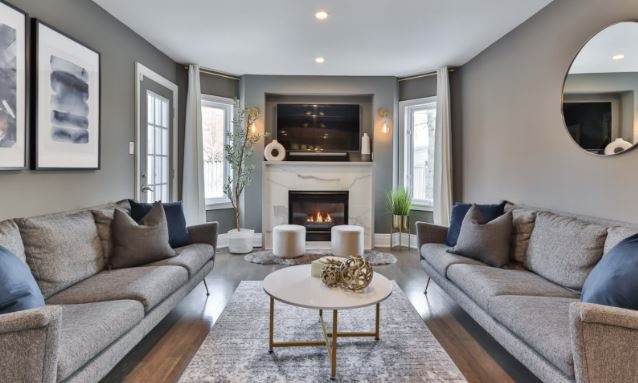Room layout is among the most vital components of wow-worthy interior design. It influences the way a room looks and feels, which makes it perfect on both functional and preference-based levels. Are you wondering how to plan your room layout and make the best use of space? Today’s your lucky day. In this post, we’ll cover the basics of room planning and provide some really useful tips on how to create a smart furniture layout in a room.
Before we delve into the details, here’s a brief overview of what we’ll let you in on below:
- start planning your room layout with a clean slate;
- make room functionality your fundamental consideration;
- choose or create a room centerpiece;
- arrange larger elements first;
- leave some empty space for easier breathing.
1. Begin with a Blank Canvas
Detaching yourself from your typical views on room layout might be challenging. However, if you start from scratch, you will succeed in moving away from the predetermined rules and get the chance to concentrate on what’s best for you. Use your favorite software for arranging furniture before you start physically moving it. Prefer good old-fashioned practices? Feel free to make the most of your paper, pencil, and ruler. From-scratch is a great place to begin your room-layout planning venture.
2. Remember: Functionality Is Key
How the room is going to serve you is the key factor to take into consideration when planning a layout. So, prior to incorporating furniture, take the time to think over the room’s main functions. What do you plan to use it for? Eating, resting, having fun, playing with kids? Once you determine the room’s main practical purposes, incorporating the stuff you need into the space will become a lot easier. For instance, if you plan a living room layout and want to use it for watching TV and relaxing after work, make sure it has cozy couches, nice chairs near the window, and a TV you can watch from any area in the room.
3. Choose (or Create) a Centerpiece
Determine the centerpiece of the room. It can be a fireplace or mantel, a cozy central sitting area, a window with a fantastic view, a living room table with trendy decorative trays, etc. Make sure you define your room’s focal point at the early stages of layout planning, for it will help you show off your home’s strongest sides. In case the space you’re working to plan doesn’t come with a natural centerpiece, you can always create one. Use candles, floral arrangements, decorative glass, or mirrors to achieve the required center-of-attention effect.
4. Arrange Larger Items First
Now that you’ve identified the room’s main functions and central elements, it’s time to integrate furniture into your floor layout and play around with different configurations. If you’re using a mobile app to plan your room layout, you’ll have a typical array of items to pick from, along with the possibility to customize the plan with your own elements. In either case, make sure you position larger pieces of furniture first: beds, couches, tables, armchairs, etc. These bulky items are expensive to reposition, so make them a solid priority. After finding the right space for them, feel free to add smaller elements like shelves, carpets, paintings, and lamps.
5. Prioritize Balance & Freedom
Left with empty space or empty corners? You can put them to good use by transforming them into a reading or lounging space. Make sure you avoid filling every last inch of the room and thus making the space feel overwhelming. Don’t forget that the coziest, most stylish interiors tend to come with some free space that makes the central elements truly shine. Leave space for all the doors in the room to open and never underestimate the importance of negative space when planning a room layout.
To Wrap Up: Experiment & Improvise
Think outside the box and give an experimental room layout a go to figure out how it makes you feel. You can always move things back again in case it doesn’t tickle your fancy. Read more on the topic before you start bringing your plans to life. After all, learning the rules is a must if you want to break them in the most elegant way. With some knowledge, sense of style, and determination, you can create a truly efficient room layout that also reflects your unique taste and personality.

